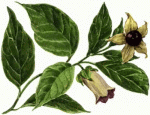Botany
|
20 december 2014 06:22:34 |
| Exploiting transcriptome data for the development and characterization of gene-based SSR markers related to cold tolerance in oil palm ( Elaeis guineensis ) (BMC Plant Biology) |
|
Tweet Background:
The oil palm (Elaeis guineensis, 2n?=?32) has the highest oil yield of any crop species, as well as comprising the richest dietary source of provitamin A. For the tropical species, the best mean growth temperature is about 27?C, with a minimal growth temperature of 15?C. Hence, the plantation area is limited into the geographical ranges of 100N to 100S. Enhancing cold tolerance capability will increase the total cultivation area and subsequently oil productivity of this tropical species. Developing molecular markers related to cold tolerance would be helpful for molecular breeding of cold tolerant Elaeis guineensis.
Results:
In total, 5791 gene-based SSRs were identified in 51,452 expressed sequences from Elaeis guineensis transcriptome data: approximately one SSR was detected per 10 expressed sequences. Of these 5791 gene-based SSRs, 916 were derived from expressed sequences up- or down-regulated at least two-fold in response to cold stress. A total of 182 polymorphic markers were developed and characterized from 442 primer pairs flanking these cold-responsive SSR repeats. The polymorphic information content (PIC) of these polymorphic SSR markers across 24 lines of Elaeis guineensis varied from 0.08 to 0.65 (mean?=?0.31???0.12). Using in-silico mapping, 137 (75.3%) of the 182 polymorphic SSR markers were located onto the 16 Elaeis guineensis chromosomes. Total coverage of 473 Mbp was achieved, with an average physical distance of 3.4 Mbp between adjacent markers (range 96?bp - 20.8 Mbp). Meanwhile, Comparative analysis of transcriptome under cold stress revealed that one ICE1 putative ortholog, five CBF putative orthologs, 19 NAC transcription factors and four cold-induced orhologs were up-regulated at least two fold in response to cold stress. Interestingly, 5? untranslated region of both Unigene21287 (ICE1) and CL2628.Contig1 (NAC) both contained an SSR markers.
Conclusions:
In the present study, a series of SSR markers were developed based on sequences differentially expressed in response to cold stress. These EST-SSR markers would be particularly useful for gene mapping and population structure analysis in Elaeis guineensis. Meanwhile, the EST-SSR loci were inducible expressed in response to low temperature, which may have potential application in identifying trait-associated markers in oil palm in the future. |
| 112 viewsCategory: Botany |
 The chickpea genomic web resource: visualization and analysis of the desi-type Cicer arietinum nuclear genome for comparative exploration of legumes (BMC Plant Biology) The chickpea genomic web resource: visualization and analysis of the desi-type Cicer arietinum nuclear genome for comparative exploration of legumes (BMC Plant Biology)Side-effects of domestication: cultivated legume seeds contain similar tocopherols and fatty acids but less carotenoids than their wild counterparts (BMC Plant Biology) 
|
| blog comments powered by Disqus |
MyJournals.org
The latest issues of all your favorite science journals on one page
The latest issues of all your favorite science journals on one page



